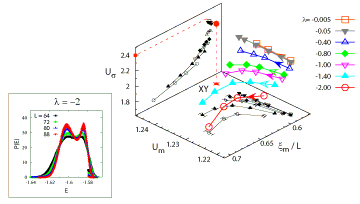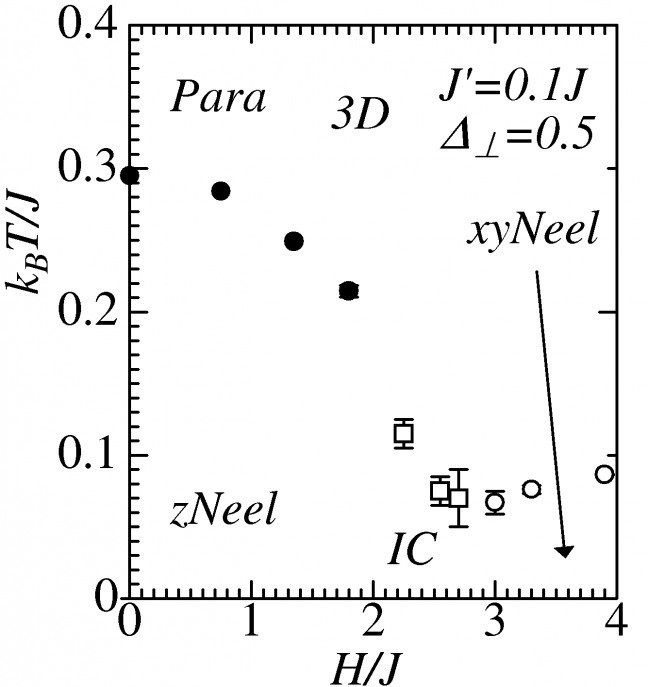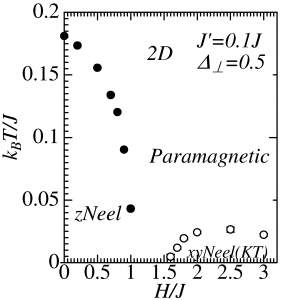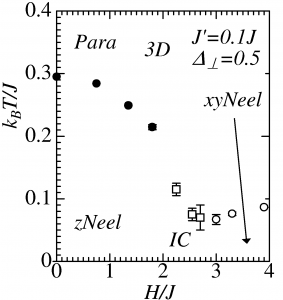Several quantum magnets comprise two sublattices of magnetic ions coupled by a geometrically frustrated exchange. This is for instance the case of a Heisenberg antiferromagnet on a body centered tetragonal lattice or a square lattice with nearest- and next-nearest-neighbor exchange interactions. In the regime of intersublattice coupling smaller than the intrasublattice exchange, it can be shown that the frustrated nature of the intersublattice exchange precludes a bilinear coupling between the order parameters of the two sublattices. The Hamiltonian symmetry only allows for an effective biquadratic coupling. The biquadratic interaction tends to align the order parameters of the sublattices in either parallel or antiparallel. This results in the Ising-like Z2 symmetry breaking in the ground state in addition to the usual spin-rotational symmetry breaking.
In Ref. 1, we investigated such a phase transition with the additional Ising-like symmetry breaking for the XY spin case, which is relevant for a spin-dimer compound BaCuSi2O6 [1]. More specifically, we performed Monte Carlo simulations to obtain a renormalization group flow diagram around the decoupled model with intersublattice interaction (∝ λ) being zero. Figure 1 is the obtained flow diagram. It shows several parameters of zero scaling dimensions and therefore at second order transitions the flow should converge to a stable fixed point. It can be clearly seen that the flow starting around the decoupled XY fixed point (indicated by a large filled circle) systematically deviates from it, evolving toward the region where a clear first order signature is obtained (λ = -2; see the inset where an energy histogram with the double-peak structure is shown).
Neither a separatrix nor a stable fixed point is found. It means that the biquadratic coupling is relevant at the decoupled XY fixed point (this can also be shown using a scaling argument [2]), and the resulting crossover behavior leads to a first-order transition.
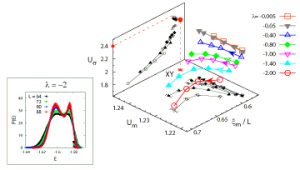
So far there is no experimental report suggesting the first-order transition in BaCuSi2O6, and the experimental data such as specific heat can be fitted using the XY model. The reason is that BaCuSi2O6 is a quasi-two-dimensional system and thus the intersublattice biquadratic coupling which arises from second-order perturbation with respect to the ratio between the interlayer and the intralayer bilinear exchange coupling is extremely small in this case. Namely, the true discontinuous nature of the transition can be observed in a very narrow region near the transition point that could be easily beyond the standard experimental precision.
(by Yoshitomo Kamiya)
References
[1] Y. Kamiya, N. Kawashima, and C. D. Batista, J. Phys. Soc. Jpn. 78, 094008 (2009).[2] Y. Kamiya, N. Kawashima, and C. D. Batista, Phys. Rev. B 82, 054426 (2010).
